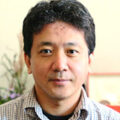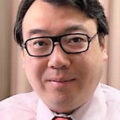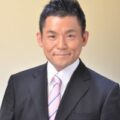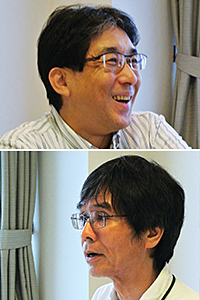Why Were Young People Drawn to Asahara Shoko? Questions posed by the Aum incidents—How even academic researchers were deceived by the founder’s fakery
The fraudulent group that seemed like the real thing

Prof. Hashizume Daisaburo
On July 6, 2018, the founder of Aum Shinrikyo, Asahara Shoko (real name Matsumoto Chizuo), and six former members of the cult leadership were executed. Six other leaders of the group were executed on July 26, 2018. These executions were punishment for the perpetration of awful acts that shocked not only Japan but also the world. They included the killing of lawyer Sakamoto Tsutsumi and his family in 1989, the Matsumoto sarin attack of 1994 and the Tokyo subway sarin attacks of 1995. Although the trial took a long time, once the punishment is determined it is natural that it will be carried out. I feel no particular emotion regarding this.
I would like to emphasize that the lesson we learn from this case is that “the Aum Shinrikyo cult group was the first to use weapons of mass destruction in a terror incident directed against ordinary people.” Therefore, first, let us look back at what kind of religion Aum Shinrikyo actually was.
For the genesis of the Aum group we must go back to the yoga school he set up in 1984, the Aum Shinsen-no-Kai. From the beginning, Asahara made some odd statements, such as, “through religious practice, you too will be able to levitate,” but students could practice yoga and eat curry in the atmosphere of a club. In 1987, however, Asahara changed the name to Aum Shinrikyo and began to claim that he was a guru who could communicate with the Hindu god Shiva. Around this time too, his ideas became more radical as he started to put forward an apocalyptic teaching of Armageddon (the battle at the end of the world).
Because Asahara staged some colorful performances such as levitation, the mass media covered these as a kind of entertainment. Meanwhile, the religious scholars Nakazawa Shinichi and Shimada Hiromi, and the thinker Yoshimoto Takaaki, became interested in and positive towards Asahara’s religious group and its serious religious practice. Following the Aum incidents, however, these individuals who had once been positive towards Aum were ostracized by society. Since Japan’s traditional Buddhism was in a stage of shocking stagnation, one can understand why they had high hopes for Aum. Yet, if they had calmly considered Aum’s hotchpotch of different dogma and their ad hoc performances, I don’t think they would have casually supported the group.
A distinct characteristic of Aum Shinrikyo was how it overplayed Christian doctrine on a base of Buddhism. This Buddhist component comprises early Buddhist teachings based on original Buddhist texts mixed with Tibetan Buddhism. Asahara was also strongly influenced by Agon-shu, of which he had become an adherent as a young man. Also, the Armageddon emphasized by Asahara was artificially grafted on: a prophecy from the Book of Revelation made to seem like Buddhism.
Although Japan’s Buddhism came from China as part of the Mahayana, many of the principle sutras were compiled at a different time and place from the historical Buddha, and they are some distance away from the original sutras. Asahara based his teaching on early Buddhist texts such as the Agama sutras and promoted his group as a return to the beginnings of Buddhism. Also, Asahara succeeded in meeting with the 14th Dalai Lama, making use of that in his propaganda activities to create the impression of authenticity. Since his religious practice methods at the time of the yoga school appeared quite authentic, it is likely that many individuals who were not that knowledgeable about Buddhism or new religions sometimes believed that this was the real thing.
Aum required rigorous religious practice of its adherents, forced them to leave their homes, and gave them various duties. On the other hand, Asahara himself kept a number of lovers as well as his wife and had fifteen children. Adherents also used headsets to bring their brainwaves into sync with Asahara’s and took illegal drugs such as amphetamines and LSD. Had this reality been revealed, Aim’s fraudulent practices would have been obvious to anyone. However, that only happened after the investigation progressed. Just going by the documents and PR materials publicly released by the religious group, it probably appeared to be an acceptable religious group.
If adherents get too sucked into the activities of a religious group, sacrifice their daily lives, and are forced to engage in anti-social activities, there is something wrong. Those involved at the time, however, did not often realize that. It is a common method used by cults to cut adherents off from society and to convince them that the religious group’s own rules are correct.
There are many kinds of religion, but we must be wary of those that reject ordinary society or that consider ordinary society to be in the wrong. This is one thing that I constantly warn my students about.
Fakery that led to indiscriminate terrorism
Next, I’d like to consider why Aum ran out of control and why young people followed it on that course.
Aum Shinrikyo sought to make the whole of Japan part of Aum based on an apocalyptic doctrine of eagerly awaiting Armageddon. This began in 1990 when the Shinri Party fielded a large number of candidates in elections for the lower house of the Diet. Although the candidates stood for election wearing white clothing and playing peculiar music, Asahara and a total twenty-five leaders of the group failed to be elected. It may have seemed clearly ridiculous to ordinary people outside the religious group, but they were serious about standing for election. As far as the Aum adherents were concerned, they lost the election due to the deep degeneracy of society and persecution of their religious group. Asahara’s narrative of Armageddon became more real due to this setback to the group’s advance into society. Meanwhile, the ties between the founder and his followers were strengthened and Asahara began to feel a sense of urgency.
Next, Asahara ordered the implementation of his own interpretation of the Vajrayana sutra, and actively pushed for phowa (murder). In order words, Aum was sucked into illegal activities. From 1989 it had murdered its own adherents and the lawyer Sakamoto Tsutsumi along with his family. But from the time of their failed election campaign, Asahara implemented his ideas more and more fully.
Asahara claimed that World War Three would begin in 1997 caused by an oil crisis in the Middle East, and that by 1999 most of the world would be destroyed. Aum alone, however, would survive as a “supernatural race” and save the globe, and a new world would be created by these supernatural beings. It was completely absurd, but for Aum there was less than a decade until the end of the world and time was running out. Meanwhile, the group attempted to make small firearms and bacterial weapons such as botulinus. What’s more, having succeeded in manufacturing chemical weapons such as the highly-poisonous nerve gas sarin, they became more and more confident.
In February 1994, Asahara announced the establishment of an Aum state to the religious group’s leadership. To break through an unfavorable situation facing them in a court case over the surrender of group facilities, on June 27 that year they staged the Matsumoto sarin attack. It was the first indiscriminate terror attack by the group, in which eight residents of Matsumoto city died.
Aum was suspected of involvement in the Matsumoto sarin attack and sarin residue was detected at the group’s headquarters in Kamikuishiki village (former name) in Yamanashi Prefecture. Fearing that compulsory searches would soon occur, on March 20, 1995, it spread sarin inside trains on three Tokyo subway lines. Thirteen people were killed and over 6,000 injured in this Tokyo subway sarin attack.
The “approval” received as part of a small group
Why did young Aum followers blindly follow Asahara and end up committing such attacks? One reason is that they were given a place; in other words, they received approval. This longing for approval is not limited to religious adherents, rather we might say that it is shared by all the young generation.
Also, although the young people did not have experience of society, they did have a certain amount of physical and intellectual capability; and the young people who later became Aum leaders studied hard and had entered reasonably good universities. This, however, had not given them any sense of achievement. When they graduated from university it was a struggle to find a job, and once they found employment they worked hard as a small cog in society’s machine. They had no sense of being alive and resisted simply conforming to society. These young people were looking for a new world and found their way to Aum.
The Aum religious practice was divided into levels, and followers ascended through the stages towards enlightenment. They were also given employment at businesses run by Aum, such as ramen shops and computer shops, and this was also part of their religious practice. Their existence was acknowledged by those around them and they sensed personal growth. They probably felt much more alive within the religious group than they had in outside society.
The emergence of Aum and the way in which young people were attracted to it was probably linked to the times. Following World War Two, Marxism had a strong influence both in Japan and around the world, and the left was extending its power. As epitomized by the demonstrations against the renewal of the Japan-US Security Treaty in the 1960s and 1970s, students were actively involved in political movements. But from the beginning of the 1980s the decline of socialism and communism were apparent. The Berlin Wall fell and the USSR collapsed. The Cold War came to an end and Marxism, which had previously captured the hearts of young people, rapidly lost its fascination.
In any age, young people rebel against the authority of the older generation and seek an alternative. The replacement fashions were postmodernism, environmentalism and new religions. Aum was part of this trend, and because it was only a small group did not become part of mainstream society. Yet, because the group was small, young people could see their own connection to the group and get a feel for the value of their own existence. It was just the right size to offer a cathartic experience of opposing society. At its peak Aum had 15,000 followers. It was small as religious groups go, but one might say that it was just the right size to secretly radicalize and form a plot against society.
Combatting terrorism
Although Aum Shinrikyo was the epitome of a religious cult hostile to society, the majority of its followers had no connection with criminal activity. In any age, there will be social problems. New religions that object to society will always appear. But it is extremely rare for them to radicalize themselves like Aum. Therefore, it is a mistake to seek causes for the emergence of Aum specifically among contemporary factors such as “the darkness of the modern age,” and to think that we too are a cause.
Rather, the lesson from this case we must consider is: why did a small religious group use weapons of mass destruction to commit acts of terrorism? At present, the world is full of people who might become terrorists. There are not just religious cults, but fraudulent figures acting on their own, ethnic-nationalists, extremist thinkers and various others, so it is difficult for the authorities to keep track of them. There is no doubt that these potential terrorists express interest in the Aum attacks.
Weapons of mass destruction are known as ABC weapons: atomic weapons, biological weapons and chemical weapons. The most difficult to manufacture are atomic weapons, which cannot be made without a national-level structure. Yet, even groups that do not have technology can quickly pack an ordinary bomb with radioactive materials to make a so-called dirty bomb. It is a crude method that nevertheless causes enormous damage. The groups likely to resort to this have extreme political views or religious beliefs. To stop them, the black market in radioactive materials must be stamped out, which is very difficult to do. Also, the example of the Aum followers demonstrates that, given a small amount of funds, biological and chemical weapons can be produced by graduate students of chemistry and biology. In other words, we have come to a time when we must resign ourselves to weapons of mass destruction being used close to home.
This is an age when the movement of people has become easy and huge amounts of information can be sent back and forth across the Internet in an instant. It is also an age when it is hard to prevent crime. It is difficult to come up with effective countermeasures to small groups that have weapons of mass destruction.
To discover and prevent eight or nine out of every ten concealed plots, first we must strengthen the interception and surveillance of Internet, smartphone, and SNS communications. Unfortunately, there is no other way.
The final, absolutely crucial, measure that should be directed at young people is religious education. Japan has been half-hearted about religious education in the past, but we can no longer afford to be so. We need to teach about religion as part of the compulsory curriculum; not just to prevent the activities of cults, but also to deepen understanding of, and friendly relations with, people around the world. How do religions arise and merge with society? What kind of doctrines do traditional religions have? What are the strange features of religious cults? Teaching young people about religion would also be a hugely important way to prevent a second Aum case.
Translated from “Oumu jiken ga tou mono—Kenkyusha omo damashita kyoso no ikasama: Asahara Shoko ni naze wakamono wa hikaretanoka (Questions posed by the Aum incidents—How even academic researchers were deceived by the founder’s fakery: Why were young people drawn to Asahara Shoko?),” Chuokoron, September 2018, pp. 138-143. (Courtesy of Chuo Koron Shinsha) [September 2018]
Keywords
- Aum Shinrikyo
- religious cult
- Asahara Shoko
- Matsumoto Chizuo
- Armageddon
- Matsumoto sarin attack
- Tokyo subway sarin attack




